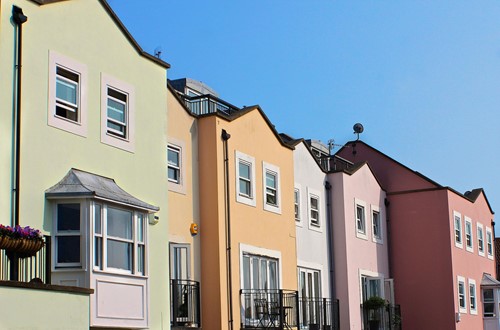
A common sight in historic metropolitan areas, row houses are an iconic example of multifamily housing structures. As their name suggests, row houses are oriented next to one another “in a row” and without a space in between. Each home is separate from the others, but the structure or building often shares a homeowners’ association or similar governing body.
Along with these key factors, there are plenty of characteristics that make row houses special.
Row houses can typically be identified by the following features:
In addition to aesthetic and structural elements, row houses often line entire streets or city blocks. In the United States, you’re likely to find row house neighborhoods in major urban centers with prominent historic districts, such as San Francisco, New York City, Boston and Baltimore.
While following the characteristics listed above, row house construction also falls into some basic architectural style categories. The main architectural styles of row houses include:
Row houses are popular among many homeowners for their historical significance and unique architectural features. Many cities strive to maintain the integrity and appearance of row houses, so residents can continue to enjoy their aesthetic and charm for decades to come.

An enthusiastic polo player, aviatrix and fourth generation member of one of the oldest winery families in the Napa Valley, Roberta has lived in the Bay Area her entire life. She has over thirty years of experience in buying, selling and managing real estate in the residential, investment and commercial markets. Not content to just “get the job done”, she wants to exceed your expectations. Roberta believes in service with commitment. Utilizing the kind of knowledge that is obtained only through extensive life experience and an in-depth understanding of the area and local market, she works with you to provide maximum results. During her accomplished career, Roberta has refined important skills in communication, negotiation, attention to detail and sound business practices, all of which are vital to the success of her clients today. Please call Roberta directly at 707.339.0233 to discuss your real estate needs.